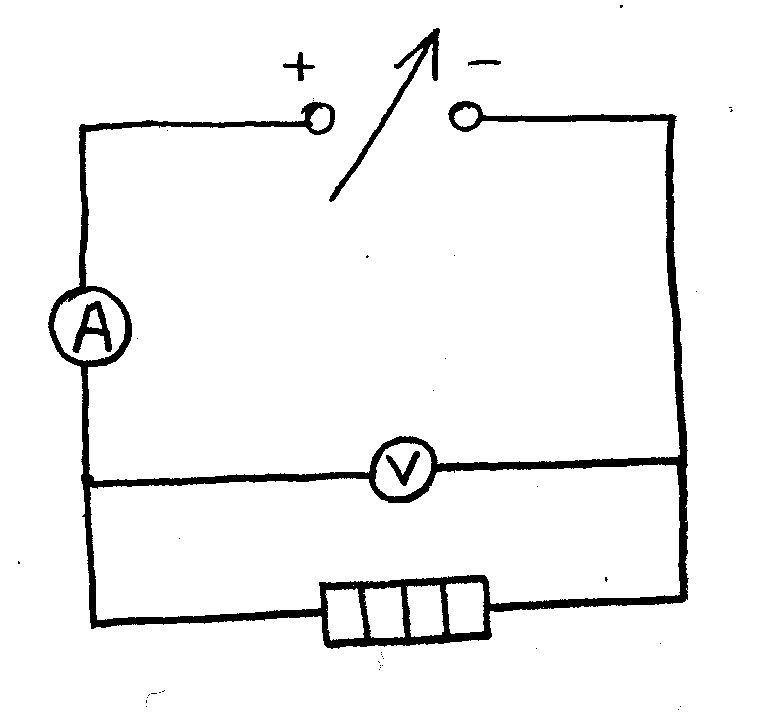An introduction to…Heating and Cooling Rates
In this experiment we will investigate the heating rate of an aluminium block heated by an electrical heater and the natural cooling of the same block after the heater has been turned off.
We will use the heating rate to determine a value for the specific heat capacity of aluminium. We will see if the cooling rate changes in accordance with Newton’s Law of Cooling.

Set up the circuit as shown in the diagram.
Place the heater in the hole in a 1kg aluminium block. Support the block on two pencils (or similar) so that air can circulate around the block.
Adjust the power supply to give a potential difference across the heater of about 12V. Turn off the power supply to avoid significant heating of the block.
Put a thermometer in the other hole in the block.
Determine the starting temperature of the block, which should be room temperature. Switch on the power supply and start a stopwatch.
Record the current and potential difference and hence calculate the power delivered to the heater. If necessary adjust the power supply carefully to keep the potential difference the same whilst the experiment proceeds.
Record the temperature at 1 minute intervals for the next hour. There will be other tasks to be working on in between your measurements!
At 12 minutes, switch off the power supply but do not remove the heater or move the block. Do not stop the stopwatch but continue to take temperature measurements.
Plot a graph of temperature (y-axis) against time (x-axis). Now that you know the maximum temperature and the maximum time you can set up your axes and plot the points on the graph as the experiment proceeds. Also record your results in a results table.
You should find that, after a settling-in time, the temperature rises linearly with time for the first 12 minutes. Draw the best fit line for this section of the graph and determine the gradient of this line. What should you do if your results show a curved trend?
Given that , use your measurements and gradient value to determine a value
for the specific heat capacity (c) of aluminium. Compare your value to an accepted value from a data book. The mass of the block is 1kg.
After one hour, remove the thermometer from the block and use it to determine the room temperature.
Draw the best-fit curve through your points in the cooling section of the graph. At each of three widely-separated points on this cooling section draw a tangent to the curve and determine the cooling rate (ie the gradient of the tangent).
Newton’s Law of Cooling suggests that the cooling rate is proportional to the excess temperature (the temperature above room temperature). Calculate the excess temperature at your three chosen points and hence find out if cooling rate is proportional to excess temperature in this experiment.